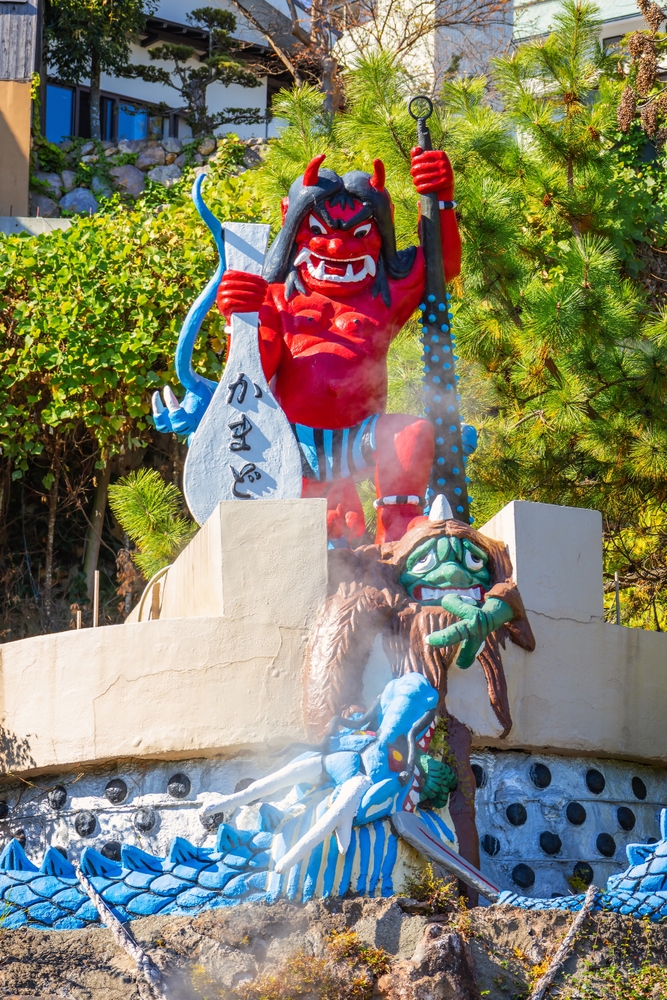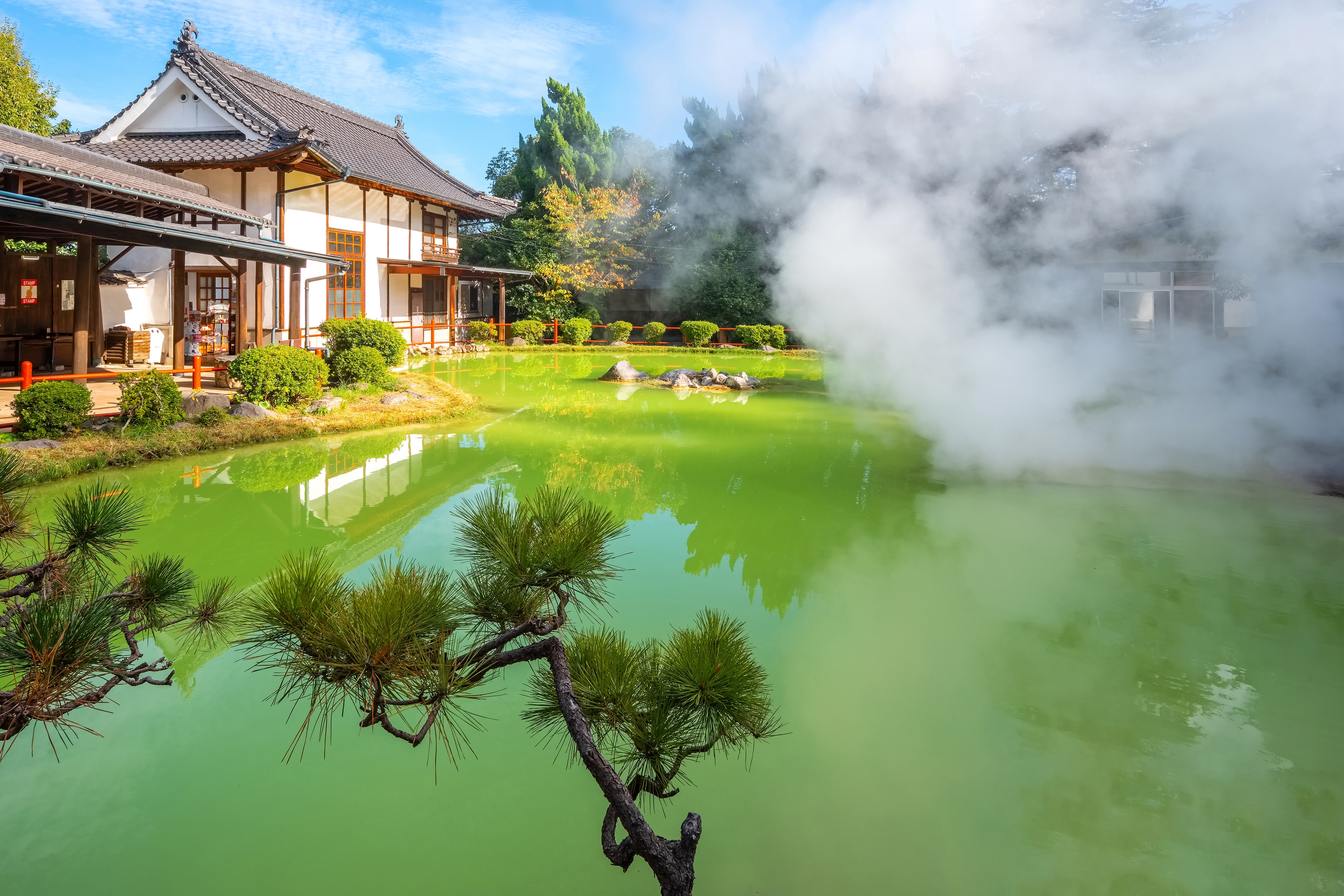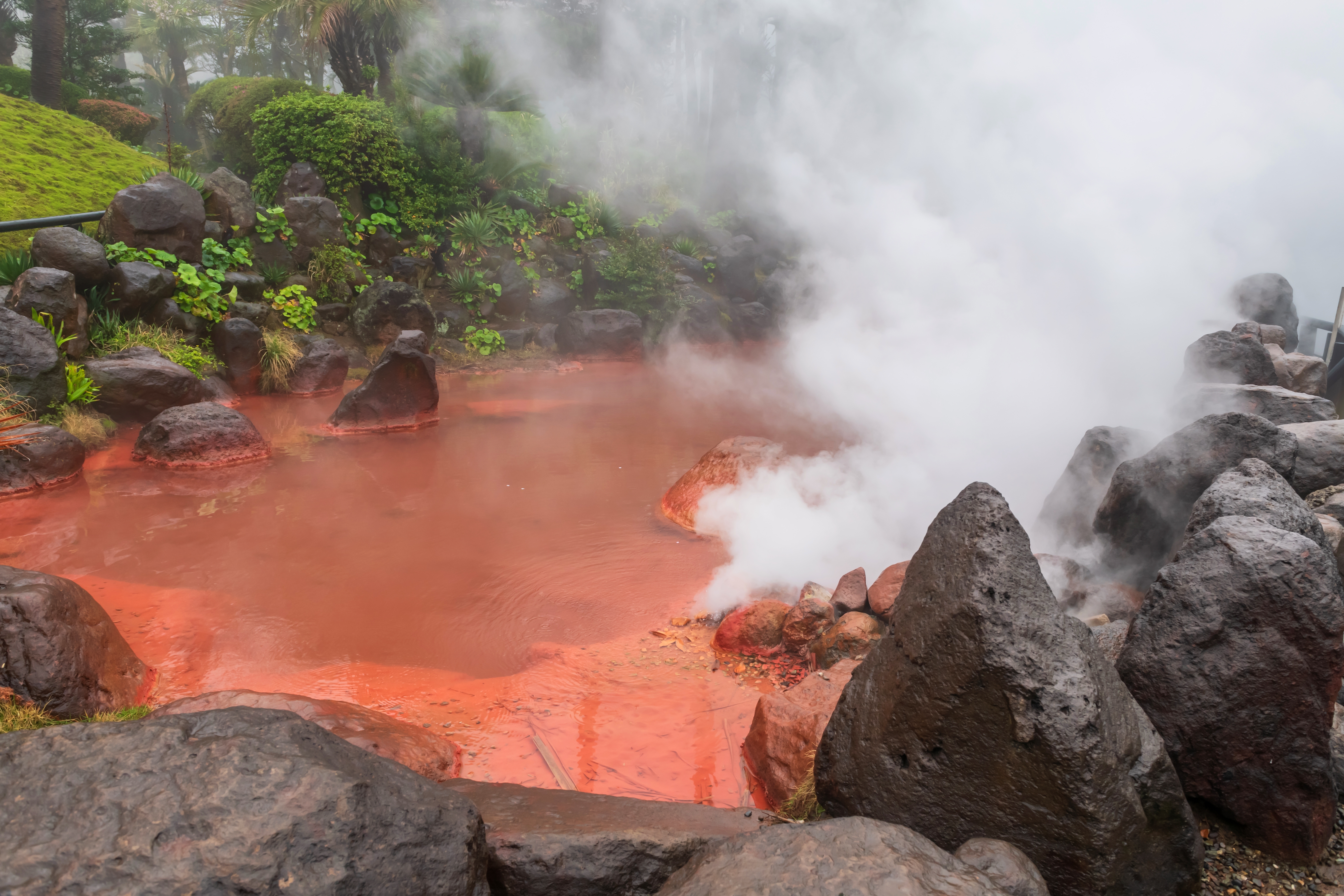How would you like to take a bath in Hell? It sounds like a particularly creative insult – but over in Japan, it’s actually a fairly popular tourist attraction.
Beppu, a small city in Ōita Prefecture, is an onsen town – a resort town built around the presence of hundreds of naturally occurring hot springs. And when we say “hot”, we mean hot – with seven of the pools earning themselves the rather dramatic title of “Hell”.
What are the Seven Hells of Beppu?
You might think it’s extreme to compare a pool of water to a place known for its fire and brimstone. You’d be right.
You might think, in fact, that the name “hell” – or, to use the original term from Japanese Buddhism, jigoku – was simple hyperbole; a marketing gimmick, perhaps. You’d be wrong.
While the hot spring system is indeed a tourist destination – it has been for more than a century, in fact – their names are well-deserved. Their label also predates their commercialization by a good 200 years, at least, with the ronin and philosopher Kaibara Ekiken using the term jigoku to describe them as early as 1694.
It’s a huge geothermal system: “The total amount of discharged hot springs water is estimated to be 50,000 ton/day (9,200 gpm),” notes one 1996 paper, with the geothermal energy in the area enough to power buildings in the area.
It’s perhaps not surprising that the city is dotted with so many hot springs, though – just look at a map. Japan is notoriously located on the so-called “Ring of Fire” – the tectonic belt of volcanoes and earthquakes that surrounds the Pacific Ocean – and it’s one of the most tectonically active places on the planet as a result. Beppu itself is a coastal city surrounded by volcanoes, both dormant and active, and sits amid a large number of seismic faults.
You almost couldn’t design a better candidate for an onsen town.
But what makes the geothermal springs quite so… infernal? Well, let’s give a short rundown of all seven:
Umi Jigoku: the Sea Hell
If it wasn’t for the absurdly thick clouds of steam emanating from these milky turquoise waters, it would look idyllic. The pool’s beguiling color, however, is actually just one clue as to its true nature: it likely comes from the water being laced through with particles of sulfur, which gives the otherwise Rayleigh-scattered blue waters a hint of demonic yellow.
On top of that, this pool is about as acidic as vinegar, and – more importantly – around 98 degrees Celsius. In fact, it’s literally so hot that a common local specialty is eggs boiled by being dunked in the water. So… don’t jump in.

Umi Jigoku.
Oniishi Bozu Jigoku: the Monk Head Hell
This jigoku is a twofer: one hot clay mud pit – the name comes from the observation that the bubbles of boiling mud resemble a Buddhist monk’s bald head – and one continuously smoking geyser that spews out a noise referred to by locals as “demons’ snoring”.
Kamado Jigoku: the Furnace Hell
This is actually six hells – the locals refer to them as “Kamado Jigoku 1/2/3/4/5/6-chōme”, like an address. It is, the official tourist website boasts, “a luxurious hell where you can enjoy various hells in one place,” and it’s also something of a pilgrimage site for fans of the manga Demon Slayer.
The centerpiece of this hell is the second chōme: it’s guarded by the bright red furnace demon, who is a sort of mascot for the hell. Legend has it that, long ago, he visited nearby village of Uchihakama every night, hunting for people to eat. The villagers prayed to Hachiman, a Shinto-Buddhist mashup deity of archery and war, to get rid of the demon, and – despite his primary skill set – Hachiman opted for the age-old favorite of folk tales worldwide, the wager. Build 100 steps in one night, he challenged the demon, and you can have a sacrifice – but fail, and I will boil you in the furnace and eat you!
By the time the sun rose, the demon had built 99 steps, and fled in a panic. Now reformed, the demon acts as the “gatekeeper” of Kamado Jigoku, surrounded by plumes of scalding 100-degree steam.

The demon at Kamado Jigoku.
Image Credit: cowardlion/Shutterstuck.com
The third hell, like Umi Jigoku, is a beautiful blue color – caused again by Rayleigh scattering by tiny silica particles brought up from the bedrock. The water is about 85 degrees Celsius, which is comparatively cool by hell standards – but will still cause immediate and lasting burns if you get even just splashed.
Like the first mini-hell in the Kamado range, the next one is a hot mud hell. Rather than the milky grey of Oniishi Bozu, the mud in these pools is brownish-red – a color it owes to the variety of sticky clays that make it up, which are in turn made from molten bedrock. The sixth chōme is also a mud pool, but this one is much redder, and in that case it’s due to the higher levels of iron in the ground below it.
The most interesting chōme, though, is number five: “A mysterious hell where the pond changes color,” the official website says.
“Several times a year, the pond suddenly changes color one day,” it explains. “The colors become darker and lighter, such as blue and green. The cause is unknown, but the power of nature is mysterious.”
Oniyama Jigoku: the Crocodile Hell
Next up is a hell that probably literally features in some people’s nightmares: the crocodile hell. It’s named that because – well, guess. Yeah. It’s full of crocodiles.
Originally brought over from Malaysia in 1922, there are now around 80 crocs at Oniyama. “We are trying to protect and breed the crocodiles since they are endangered,” explained one keeper in 2019.
The water in Oniyama Jigoku is bright green, and around 98 degrees.

The pond at Shiraike Jigoku hot spring.
Image Credit: cowardlion/Shutterstuck.com
Shiraike Jigoku: the White Pond Hell
Named the “white pond” in both English and Japanese, this hell is… well, it’s a white pond.
To be fair, the water is actually clear when it comes out of the spring – but it’s supersaturated to a frankly ridiculous degree with sodium chloride, silicic acid, and calcium bicarbonate. When it reaches the pond, the temperature and pressure changes, causing the color to manifest.
Chinoike Jigoku: the Blood Pond Hell
One of the most notorious hells, “blood pond hell” earns its name by way of its acidic muddy vermillion waters. “Since ancient times, this red hot mud has been used in a variety of ways,” notes Enjoy Onsen, a website devoted to the Beppu hot springs, “including making medicine for skin diseases, dyeing clothes, and building house pillars.”
The rich red color comes from the extreme levels of iron and ferrous minerals – though it may not be so blood red forever. “The color of the Chinoike Jigoku hot spring was reported to be of a much darker red in the past, but has gradually become lighter (more yellowish than red) in recent years due to an increase in the content of jarosite in the sediments,” notes one 2016 paper.
Still, it’s not only the color that’s impressive. “This Jigoku is a hydrothermal eruption crater, and eruptions were recorded nine times during the period from 1875 to 1927,” reports a paper from 1996. “Total output of hot water from the crater is 100 l/min (23 gpm), and the maximum temperature is 136.8 C (278 F) at the bottom.”

Chinoike Jigoku Blood hell pond.
Image Credit: Blanscape/Shutterstock.com
Tatsumaki Jigoku: the Tornado Hell
Finally, there’s the big finale: the “tornado hell”. Described by viewers as “like a tornado blowing through hell,” this geyser can shoot water superheated to 150°C as high as 50 meters into the air.
Or, at least, it would be able to – if the owners of the Beppu Hells hadn’t installed a concrete ceiling over the top to protect visitors. Now, when the geyser erupts – which it does every 30 or 40 minutes, for six to ten minutes each time – it’s stopped in its tracks after just a few meters.
Which just goes to show: hell may not freeze over often, but if you go to Japan, you can always cement over it.
Source Link: What Makes The "Seven Hells Of Beppu" So Infernal?